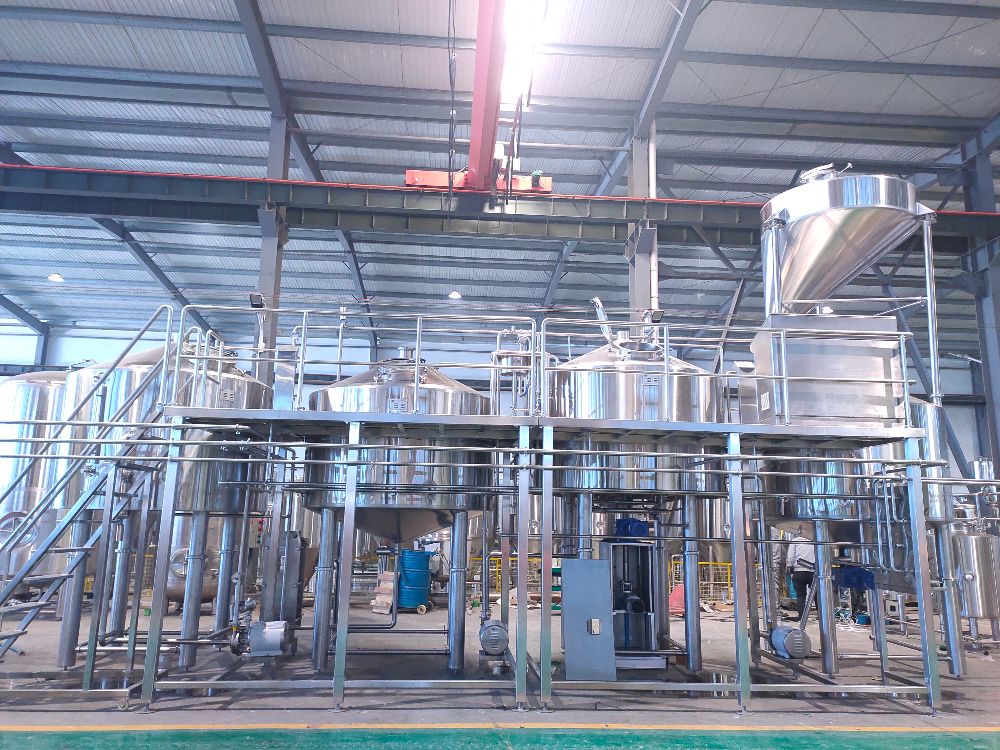How to Get Perfect Beer Foam(Part One)
- Feb 25, 2021
- 65
- tiantai
When drinking beer, when rich foam leave on your beard, like a Santa Claus, like a special gift. Do you like this? If yes, how can we get perfect rich foam during brewing beer with beer system ? Let’s check it together.

1. Choose the right malt
High protein content of malt and dextrin is conducive to enhance the durability of the wine head foam, but also make the wine body richer.
However, a large amount of protein and dextrin will react with tannins (polyphenols) and affect the clarity of beer.
Commonly used malt to enhance the wine head foam: crystal malt (such as carapils, carafoam, caramel malt), wheat malt. In addition, dark malt (such as chocolate malt) contains more melanoids and Maillard reaction products, which also helps to enhance foam persistence.
2. Adjust the produce sugar temperature
Since the maintenance of the wine head foam is closely related to the protein content in the wort, the process of destroying these proteins will have a certain impact on the foam stability.
The typical protein resting temperature is 49-54°C, which will reduce the protein that causes turbidity in cold storage, but it also decomposes the protein that is conducive to the maintenance of wine head foam. Therefore, for malt with good solubility, it is not necessary to carry out excessive protein stop. It is only recommended to carry out protein stop when you use more than 25% of un-sprouted malt (barley flakes, wheat flakes, rye flakes, oatmeal).
For malt with good solubility (which has gone through the complete malting process), use the temperature range of 68-71℃ to produce sugar, avoid protein inactivity to obtain a richer body and improve the foam retention of the wine head.
For the other factors that effects beer beer foam when brewing beer with beer system, please check following article.
Request a proposal
Nicole Zhou
Email: [email protected]

1. Choose the right malt
High protein content of malt and dextrin is conducive to enhance the durability of the wine head foam, but also make the wine body richer.
However, a large amount of protein and dextrin will react with tannins (polyphenols) and affect the clarity of beer.
Commonly used malt to enhance the wine head foam: crystal malt (such as carapils, carafoam, caramel malt), wheat malt. In addition, dark malt (such as chocolate malt) contains more melanoids and Maillard reaction products, which also helps to enhance foam persistence.
2. Adjust the produce sugar temperature
Since the maintenance of the wine head foam is closely related to the protein content in the wort, the process of destroying these proteins will have a certain impact on the foam stability.
The typical protein resting temperature is 49-54°C, which will reduce the protein that causes turbidity in cold storage, but it also decomposes the protein that is conducive to the maintenance of wine head foam. Therefore, for malt with good solubility, it is not necessary to carry out excessive protein stop. It is only recommended to carry out protein stop when you use more than 25% of un-sprouted malt (barley flakes, wheat flakes, rye flakes, oatmeal).
For malt with good solubility (which has gone through the complete malting process), use the temperature range of 68-71℃ to produce sugar, avoid protein inactivity to obtain a richer body and improve the foam retention of the wine head.
For the other factors that effects beer beer foam when brewing beer with beer system, please check following article.
Request a proposal
Nicole Zhou
Email: [email protected]


.jpg)

